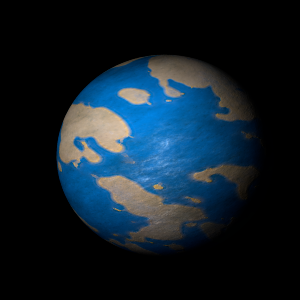|
|
Space Astro
|
Info for exoplanet "Thrymr-mejul"
| Scientific (actual) data |
|---|
| Name | Kepler-357 c |
| Planet status | Confirmed |
| Radius | 0.238 |
| Orbital period | 16.8584 |
| Semi major axis | 0.12 |
| Discovered | 2014 |
| Updated | 2021-02-05 |
| Tconj | 2454980 |
| Impact parameter | 0.82 |
| Publication | Announced on a website |
| Detection type | Primary Transit |
| Alternate names | 2MASS J19245834+4400313 c, K02073.03, KIC 8164257 c, KOI-2073 c, KOI-2073.03, WISE J192458.31+440031.2 c |
| Star name | Kepler-357 |
| Right ascension | 291.24° |
| Declination | 44.01° |
| Mag j | 13.991 |
| Mag h | 13.514 |
| Mag k | 13.408 |
| Star distance | 702.21 |
| Star metallicity | 0.051 |
| Star mass | 0.78 |
| Star radius | 0.83 |
| Star temperature | 5036 |
| Star alternate names | 2MASS J19245834+4400313, KIC 8164257, KOI-2073, WISE J192458.31+440031.2 |
| Wikipedia article | Kepler-357 c |
Back
| |
| Fictional info (?) |
|---|
| Suggested name | Thrymr-mejul |
| Planet type | Terrestrial |
| It has the densest atmosphere of all the terrestrials, consisting primarily of methane. It may have had helium oceans in the past, but these would have vaporized as the temperature rose due to a runaway greenhouse effect.
The largest moon, Sete Euan Mippaa, has a diameter greater than that of the planet Neptune. |
| Atmosphere | Methane | 32% |
| Carbon dioxide | 26% |
| Helium | 19% |
| Ethane | 10% |
| 2H2O | 9.8% |
| Ammonium hydrosulfide (NH4SH) | 1.8% |
| Argon | 0.45% |
| Atmospheric pressure | 30 bar |
 |
| Moon | Nisobe Keao | Very small slightly egg-shaped rocky moon |
| Hisiga Mipoly | Very small slightly egg-shaped oceanic planetoid |
| Sete Euan Mippaa | Very small round ice moon |
| Eralgaeon-tur | Huge irregular gaseous moon |
| Nytonda-ahar | Huge irregular oceanic planetoid |
| Cahely | Large round oceanic moon |
| Petar | Huge irregular ice planetoid |
| Denomeait Pamedes | Very small irregular rocky planetoid |
| Google search for Thrymr-mejul |
|
Website by Joachim Michaelis
|
|
|
|